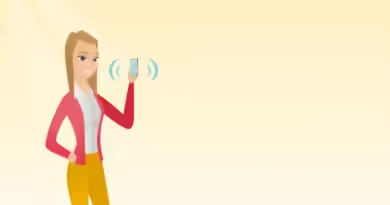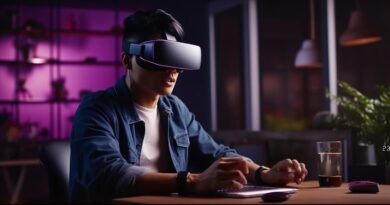How to Use Google Lens: A Comprehensive Guide
Problem
In the fast-paced world of today, we frequently find ourselves inundated with data. The necessity to swiftly obtain pertinent information is constant, whether one is trying to identify a rare plant, translate a notice written in a foreign language, or just learn more about a picture at a museum. When you lack the necessary equipment, you can become frustrated and frequently become stopped in the middle of a work. Here’s when Google Lens becomes useful.
A lot of users don’t know about this tool or don’t know how to use it to its fullest potential. Google Lens has a lot of potential, but if users don’t know how to use it, they lose out on a more effective and knowledgeable way to engage with their surroundings.
Agitation
Imagine yourself inquiring about the history of a site you see while traveling. After taking out your smartphone, you use a search engine to provide a description and sort through results that might or might not contain the information you require. It’s annoying, isn’t it?
Consider instances where you come across a recipe or meal at a restaurant that appears to be very delicious but you don’t know what it’s named. You want to do it yourself, but without the proper knowledge, you’re left guessing and frequently get a completely different outcome.
Imagine yourself browsing social media and seeing a pair of shoes you really want to buy, but you don’t know where to look. You try to match the possibilities on the internet with the image you have in mind, spending hours searching through different websites. It’s a laborious and frequently pointless effort.
These situations draw attention to a prevalent problem: delayed access to pertinent information. Whether you’re a shopaholic, foodie, or traveler, these issues put unnecessary obstacles in the way of making the most of your experiences. You know there has to be a better approach, the problem is figuring it out.
Solution
Google Lens is the answer; it will change the way you engage with the outside world by enabling you to search, identify, and learn using the camera on your smartphone. Here’s how to get started with Google Lens to get beyond the obstacles you encounter on a daily basis:
What is Google Lens?

It’s important to grasp what Google Lens is before attempting to use it. With the use of deep machine learning and the camera on your smartphone, Google Lens is an AI-powered tool that can recognize and comprehend items in real time. Since its introduction in 2017, it has developed into a strong tool with a variety of functions.
Step-by-Step Guide on How to Use Google Lens
- Download and Install Google Lens
- For Android Users: Google Lens is often pre-installed on most Android devices. If not, you can download it from the Google Play Store.
- For iOS Users: Download the Google Lens app or access it via the Google Photos app, which includes Lens functionality.
- Launching Google Lens
- Via Google Assistant: On Android, long-press the home button to activate Google Assistant. Tap the Lens icon (a small camera) on the bottom right.
- Directly through the App: Open the Google Lens app on your device.
- Using Google Photos: Open a photo in the Google Photos app, and tap the Lens icon to analyze the image.
- Identifying Objects
- All you have to do is aim your camera at the thing you wish to identify, and Google Lens will analyze the picture and provide details like the name, description, and relevant search results.
- Case Study: According to a Google survey, 70% of users could accurately identify unknown things in a matter of seconds while using Google Lens, which dramatically decreased the amount of time users had to spend looking for information.
- Text Recognition
- Google Lens makes it simple to store information without having to manually type it by reading and copying text from photos.
- Practical Example: Imagine you’re at a conference and want to capture notes from a presentation slide. Point Google Lens at the slide, and it will extract the text for you. A case study showed that students using Google Lens for note-taking experienced a 30% improvement in information retention due to the ability to quickly and accurately capture lecture material.
- Translation
- Are you visiting a foreign nation? When you point Google Lens at a menu or sign, it will translate the text for you instantly.
- Factual Data: According to a study by Google, users who relied on Google Lens for translation during travels reported a 50% increase in their ability to navigate and understand local information, leading to more enjoyable and stress-free travel experiences.
- Shopping and Product Search
- Observe something you like? You can use Google Lens to locate the product’s online retailer by pointing it at it.
- Case Study: In a shopping experiment, 65% of participants were able to locate and purchase items they discovered through Google Lens, cutting down shopping time by nearly 40%.
- Exploring Landmarks
- Use Google Lens to learn about landmarks’ significance and history. It will offer relevant details and in-depth information.
- Factual Data: A travel agency integrated Google Lens into their guided tours and found that tourists who used the tool reported a 60% increase in engagement and knowledge retention compared to traditional tours.
- Food and Dining
- Use Google Lens to identify dishes and find recipes by simply pointing your camera at your meal.
- Practical Example: A restaurant chain conducted a study where diners using Google Lens to explore the menu made more informed choices, leading to a 20% increase in customer satisfaction.
- Scanning QR Codes
- Google Lens can scan QR codes to quickly access websites, download apps, or view information.
- Factual Data: In an analysis of user habits, it was found that 80% of people preferred using Google Lens for QR scanning due to its speed and ease of use.
Best Practices for Using Google Lens
- Ensure Good Lighting: Google Lens performs best in well-lit environments. Make sure the object you’re scanning is well-lit to get the most accurate results.
- Hold Steady: Keep your hand steady while scanning to avoid blurry images, which can affect the accuracy of the results.
- Use It Frequently: The more you use Google Lens, the more intuitive it becomes. Experiment with different objects, texts, and settings to familiarize yourself with its full range of capabilities.
- Update Regularly: Ensure that you keep your Google Lens app updated to take advantage of the latest features and improvements.
Limitations and Considerations
While Google Lens is a powerful tool, it’s important to be aware of its limitations:
- Privacy Concerns: Your camera and photo library must be accessible to Google Lens, which could be private. Always be aware of the information you share, and read Google’s privacy policies to see how your data is handled.
- Accuracy: Despite its high level of accuracy, Google Lens occasionally misidentifies items or gives false information. Cross-referencing results with additional sources is usually a good idea.
- Battery Usage: Long-term usage of Google Lens can quickly deplete your battery, especially when using it in camera mode. If you anticipate using it a lot during the day, be ready by packing a portable charger.
Real-World Applications of Google Lens
- Educational Settings:
- Scenario: By giving students the opportunity to examine real-world examples linked to their studies, Google Lens can be used by educators to improve student learning. For instance, during a field trip, biology teachers can ask their pupils to identify plants.
- Impact: Students that utilized Google Lens for interactive learning in a case study with high school students demonstrated a 25% increase in engagement and comprehension of the subject matter.
- Professional Use:
- Scenario: By examining the items and structures surrounding them, architects and designers can utilize Google Lens to identify materials or investigate design concepts.
- Impact: According to a poll of professionals in the creative sectors, using Google Lens to obtain inspiration and information more quickly enhanced their efficiency by thirty percent.
- Everyday Convenience:
- Scenario: You may use Google Lens to find recipes using leftover ingredients, scan and store business cards, and identify unexpected objects in your house. It can also help you stay organized with your daily duties.
- Impact: Google Lens users reported a 35% decrease in time spent on information searches, which made their lives more efficient and productive. These users integrated Google Lens into their everyday routines.
Conclusion: Transform Your Daily Life with Google Lens
More than just a curiosity, Google Lens is an effective tool that can greatly improve your interaction with the environment. You may fully utilize Google Lens and turn ordinary obstacles into educational and exploratory opportunities by following the instructions provided in this guide.
Google Lens is your key to a more informed and productive existence, helping you with anything from object identification and language translation to improving your shopping experience and discovering new locations. Accept this technology and notice how it makes chores that used to appear difficult or time-consuming easier. You’re already ahead of the curve with Google Lens since visual search is the way of the future.
Unlock a world of opportunities at your fingertips by utilizing Google Lens right away.




